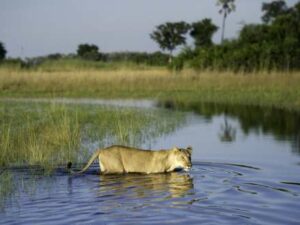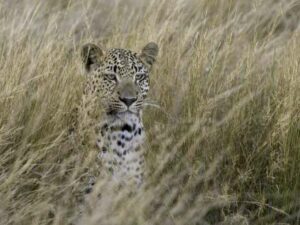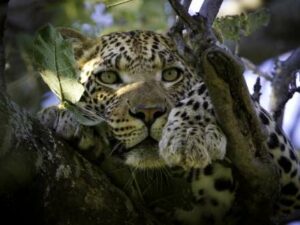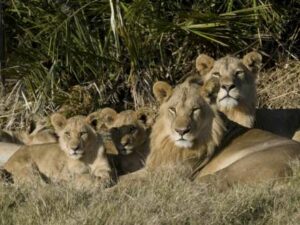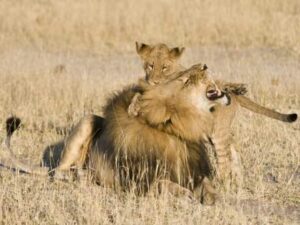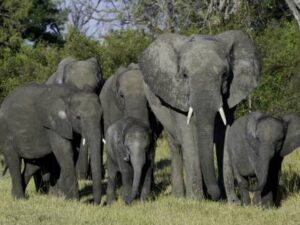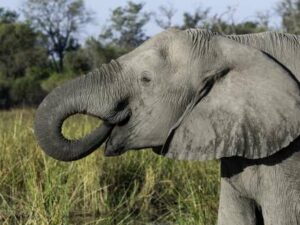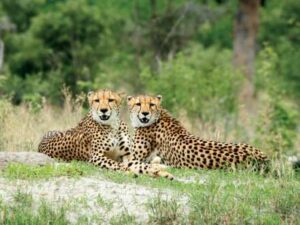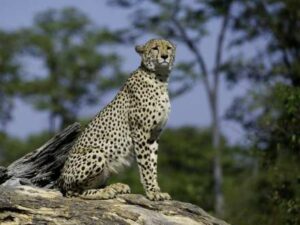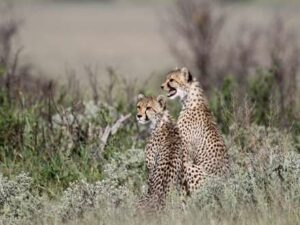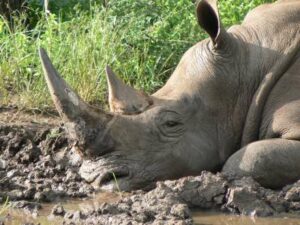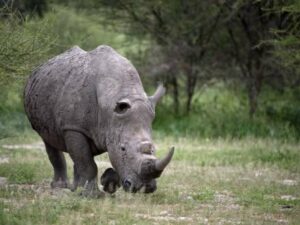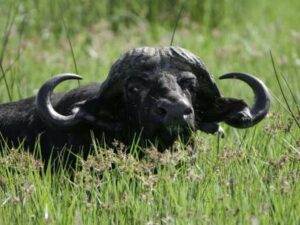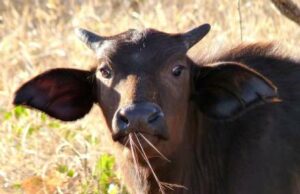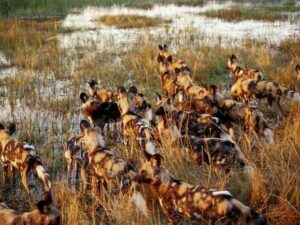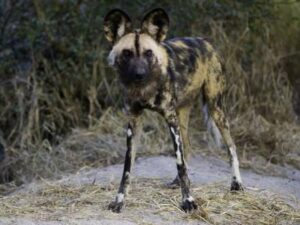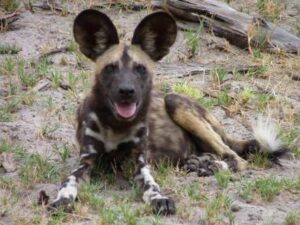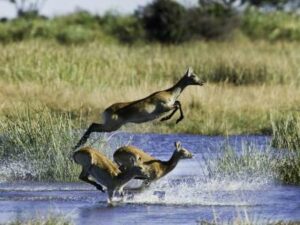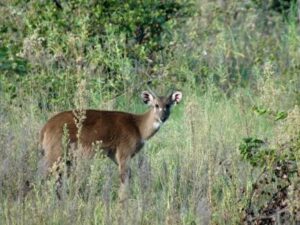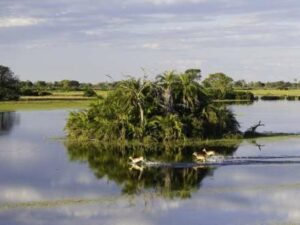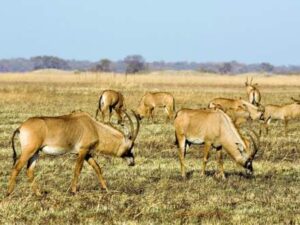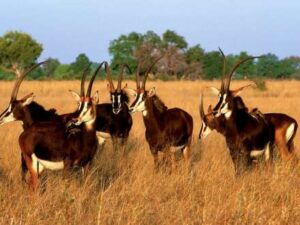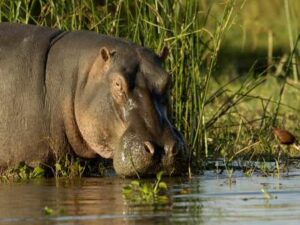Occupying some of Africa’s finest dry and wetland regions, Botswana has dedicated almost 30% of its land to conservation. The Okavango Delta, Kalahari Desert, Makgadigadi Salt Pans and the lush Linyanti regions are just a few wildlife areas to explore.
The country focuses on providing exclusive, low-volume tourism with an emphasis on ecological sustainability. With few visitors, some of Africa’s best wildlife viewing and an efficient infrastructure, the country is easy to explore by small plane, 4×4 vehicle or on a mobile camping safari.
As a result the best leopard viewing is cyclical and one camp need not necessarily be best for leopard viewing throughout the year. Over the past few years the best leopard viewing has been at Mombo, Chitabe, Tubu Tree, Vumbura Plains, Little Vumbura, Kwetsani, Jao, Jacana, DumaTau and Kings Pool. Leopard can viewed at all of our camps however.
Lion
Lion also occur throughout northern Botswana and there are well known resident prides present in all our concessions. Lion pride densities are influenced by local dynamics and the status and make up of specific prides can change from month to month as a result of shifts in male lion dominance and territoriality.
Mombo remains an excellent place to view high densities of lions in large prides, but similarly good lion viewing is possible at Chitabe, Duba Plains, Vumbura Plains, Little Vumbura and the Linyanti and Selinda camps. Smaller prides are viewed at Xigera and the Jao Camps (Jao, Kwetsani, Tubu Tree, Jacana). Lion are frequently viewed in the Central Kalahari at Kalahari Plains Camp.
Elephant
Elephant herds occur throughout northern Botswana but move quite dramatically according to the season and as a result of vegetation and water availability. During the dry season elephant occur in the highest densities in the Selinda / Linyanti and Chobe areas with a healthy population more or less resident in the Okavango.
Elephant
A different kind of elephant experience can be had at Abu Camp where guests walk with a small group of captive elephants. At the nearby Seba Camp guests have the opportunity to interact with a researcher who is studying elephants that have been released from Abu into the wild. Elephant occur only very sporadically in the northern Central Kalahari.
As a general rule therefore wherever there are high densities of these predators, cheetah sightings are not common. Prey densities ensure the presence of predators however and in prey-rich areas all species of predators occur alongside each other, the large home ranges of cheetah allowing them to move away from areas of temporarily high predator concentrations.
The best cheetah viewing in recent years has undoubtedly been in the central Kalahari at Kalahari Plains Camp. Good sightings have also taken place in the Linyanti and Selinda camps of Savuti, DumaTau, Selinda and Zarafa. Regular sightings are also had at Vumbura Plains, Little Vumbura and at Chitabe. Sporadic sightings occur at Tubu Tree, Abu and Seba.
White & Black Rhino
Both species of rhino were, until recently, extinct in the wild in Botswana. In a joint project between the Botswana government and Wilderness Safaris, both species have been returned to the wild. The release point was in the vicinity of Mombo camp and viewing of these species is still best in this area.
White & Black Rhino
While white rhino have turned up at several of our other camps and have wandered widely across the Okavango, sightings are reliable only at Mombo although this is by no means guaranteed. Black rhino occur at much lower densities and sightings of this species are very unreliable although one individual is occasionally encountered at Mombo.
Buffalo
Buffalo social structure is based on either larger breeding herds of mixed age and sex, or small groups of bulls. The large herds inhabit large home ranges which need not necessarily overlap the game drive areas of specific concessions on a permanent basis. Large herds do however provide consistently good viewing at Duba Plains, Mombo, Vumbura Plains, Little Vumbura and Chitabe.
The best time to see this species is during the denning season which spans the dry winter months between June and August. At this time the pack is tied to a much smaller area than normal because of the immobility of the pups and if the site of the den is known sightings can be regular.
The best time to see this species is during the denning season which spans the dry winter months between June and August. At this time the pack is tied to a much smaller area than normal because of the immobility of the pups and if the site of the den is known sightings can be regular.
Sitatunga is the most specialised of these species and inhabit the permanent papyrus swamp of the Okavango Panhandle and in particular the permanently flooded areas along the western side of Chief’s Island. As a result the best camps to see Sitatunga are Xigera, Jacana, Jao and Kwetsani. Isolated sightings also occur at some of the other camps.

